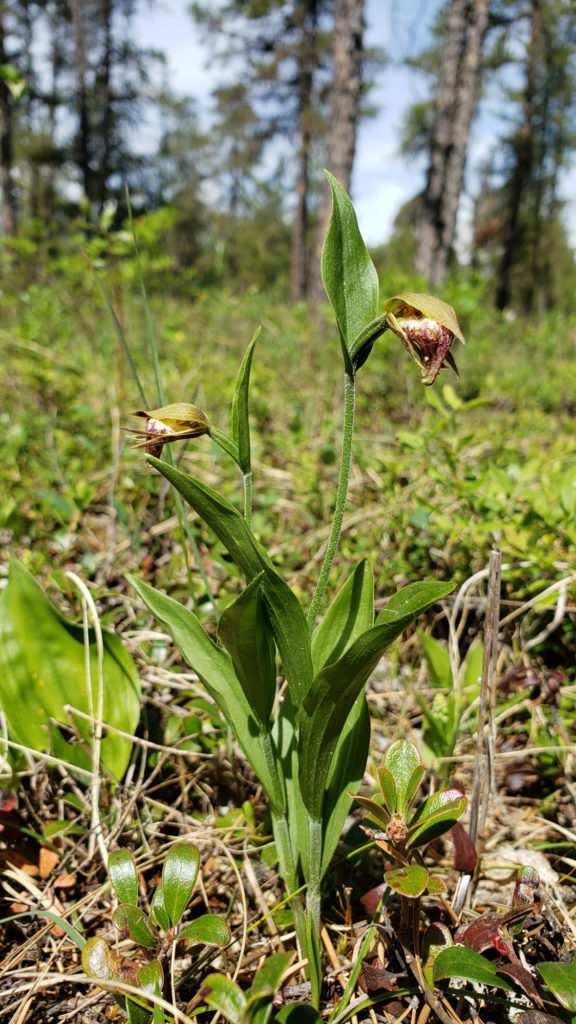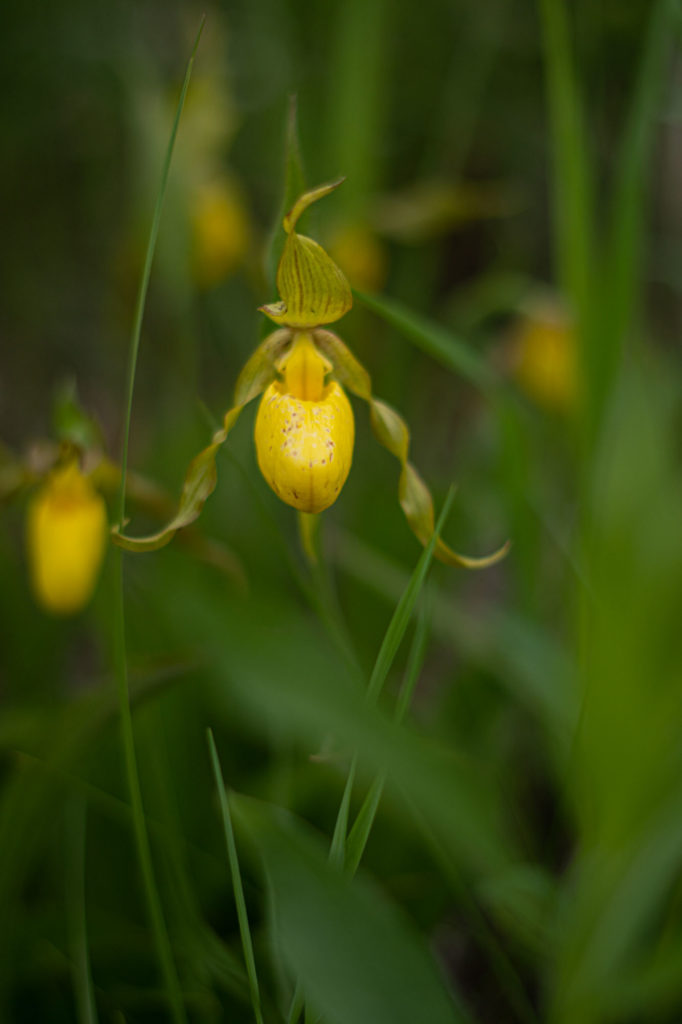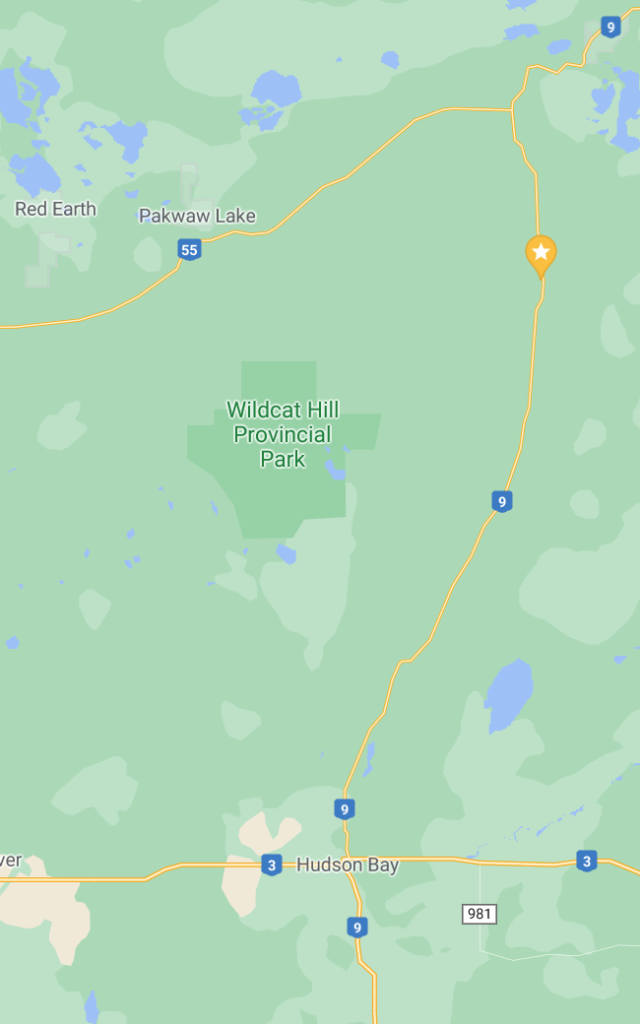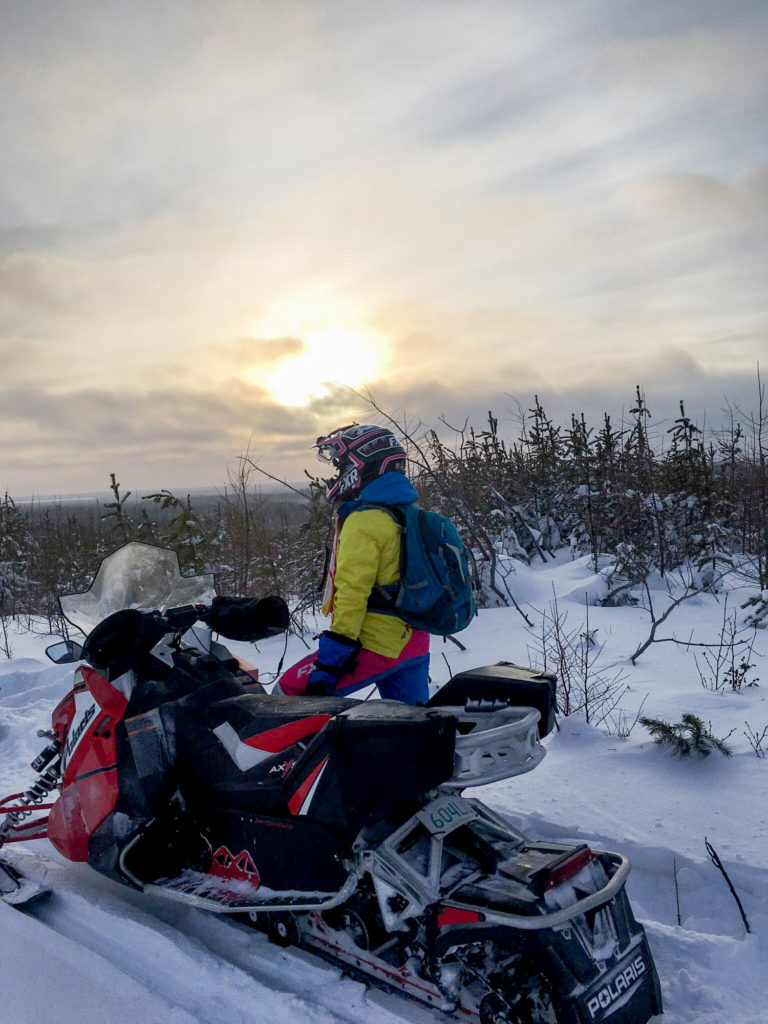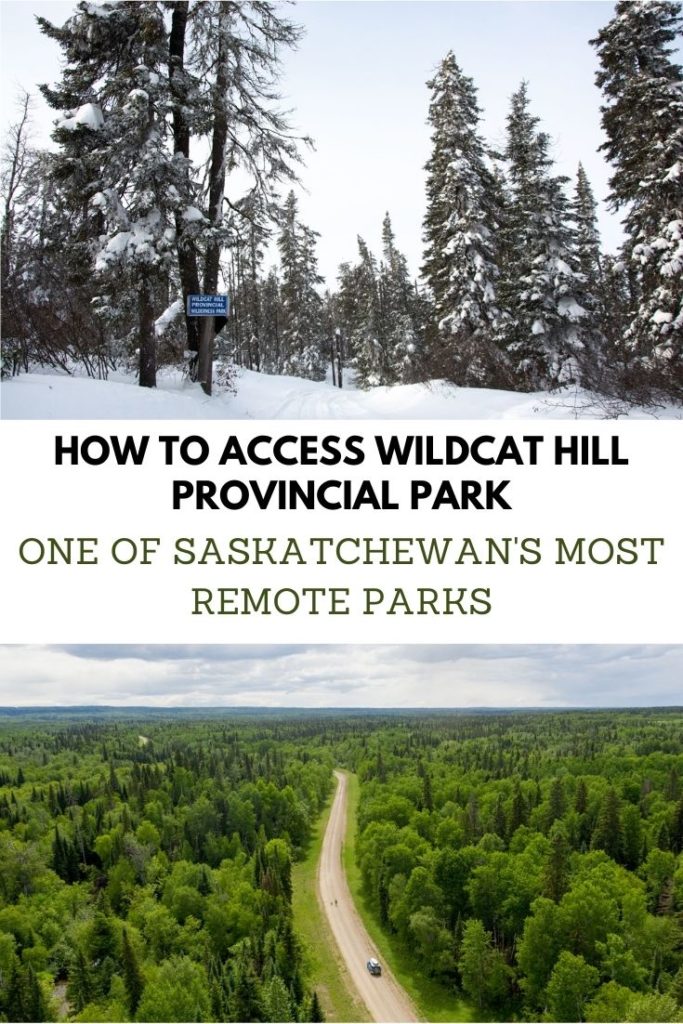Have you heard of Wildcat Hill Provincial Park? It’s one of Saskatchewan’s most remote provincial parks. But just because it’s a bit more difficult to get to, doesn’t mean you can’t!
Here’s how you can plan a trip into Wildcat Hill – it’s totally worth the effort!
**All COVID-19 restrictions and regulations were followed in the creation of this content.

Why is Wildcat Hill Provincial Park so Difficult to Access?
Due to its location tucked into the Red Deer Valley between the Pasquia and Porcupine Hills in 5 million acres of provincial forest in northeast Saskatchewan, Wildcat Hill Provincial Park is not an easy park to access. In fact, you can only pretty much only reach it during the winter months. During summer, muskeg conditions, black spruce bogs, canyons and lack of road access make it nearly impenetrable, even for ATVs. (Please note, snowmobile trails are not ATV trails. ATVs damage the trails and take considerable work to fix for the oncoming winter season if wrecked. Please be respectful and refrain from riding ATVs on snowmobile trails).
READ MORE: How to Get to Nistowiak Falls – Explore One of Saskatchewan’s Highest Waterfalls
READ MORE: Hiking the Rice River Canyon: Everything you Need to Know
About Wildcat Hill Provincial Park
Since the park’s inception in 1971 as a protected area (it became an official park in 1992), its status has helped maintain more than 54,000 acres of the Boreal forest ecosystem – the world’s largest forest that covers just over half of Saskatchewan and much of Canada.
Wildcat Hill, the hill the park is named after, has an elevation of 670 metres above sea level. It’s one of Saskatchewan’s highest points of land (after other notable and visit-worthy elevated locations like Cypress Hills and nearby Brockelbank Hill).
If you’re brave enough (and a well-prepared off-the-grid explorer) you’ll be rewarded with a true backcountry experience in the summer months. But be warned, accessing this park is not for the inexperienced or faint-hearted. You’ll have to hike through dense bush, wet and marshy sections and creek crossings just to gain access to the park (and in true-Sask. style, battle a lot of bugs).
READ MORE: Where to Stay in Hudson Bay When Visiting Wildcat Hill Provincial Park

Why Visit Wildcat Hill Provincial Park?
Due to its location within the hills, snow is consistently several feet deep. It makes for some of the best powder and trail riding in the province.
READ MORE: How to Layer for Cold Weather (and Saskatchewan’s Four Seasons)
In the summer months, there are rare species of plants to be found within the tamarack and black spruce forests. Some species include the dragon mouth’s orchid and large yellow lady slippers. It’s also possible to spot a variety of wildlife including deer, moose, lynx, cougar and elk.
But above all else, the opportunity to experience the pristine wilderness as well as the challenge of accessing such an off-the-beaten-path part of the province is what makes this such a truly unique park to visit.
How to Access Wildcat Hill
Located approximately 40 kilometres north of Hudson Bay, this park is most easily accessed by snowmobile. Several seasons ago, I made the wintery trek into the southeastern corner of the park. I felt like I was in a completely wild, rugged and untouched part of the province.
Trail 210P is the groomed and signed snowmobile trail that winds its way through the forest and along several steep canyons up to Bankside Lake. It’s a 125-kilometre looped route that climbs 549 metres with several lookout points worth stopping to check out.

A solitary but well-equipped warm-up shelter called the T.Q Shelter was built in 2015. It sits in a clearing near the shoreline of Bankside Lake. The Hudson Bay Trail Riders Club volunteers help maintain it. You’ll find chopped wood and an outhouse near the shelter. There’s an iron stove, bench seating and racks to hang gear inside.
*Be aware there is no cell service in this part of the province. Be sure to leave a trip plan behind, carry a satellite communicator as well as extra food, fuel and supplies.
READ MORE: 12 Winter Activities to Try if you Live in Saskatchewan (And Where to Try Them): The Complete Guide




